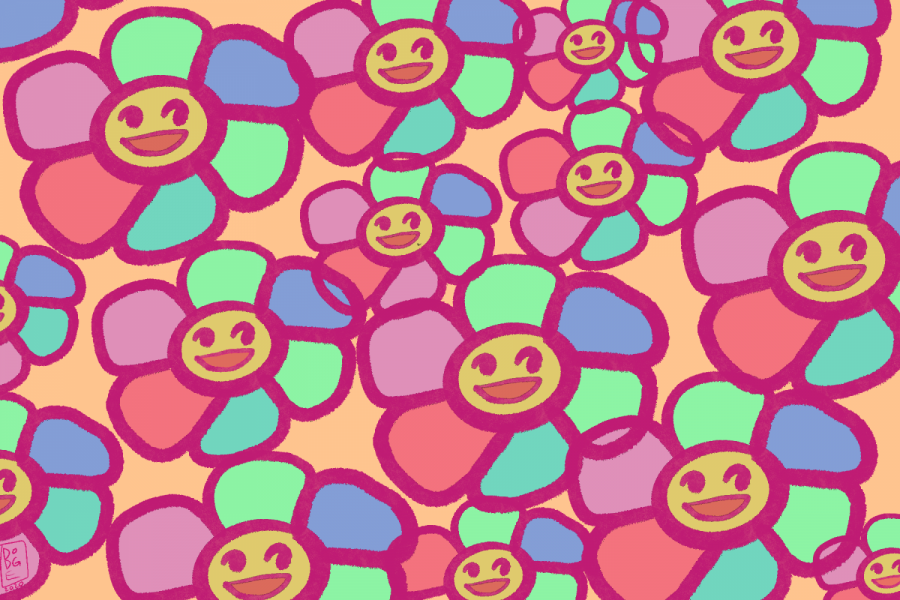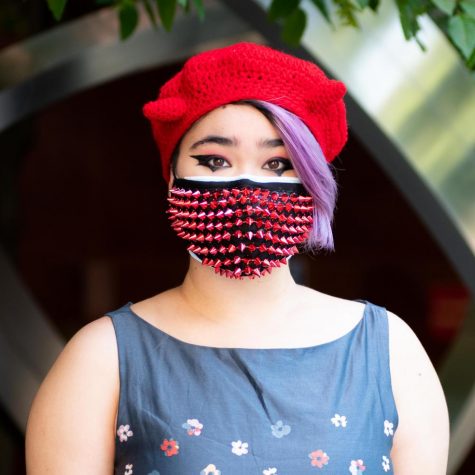Do you ever think of colors when you listen to music?
When you listen to “Colores,” shut your eyes, clear your mind and explore its spectrum of suave emotions and fruity colors.
Columbian reggaetonero J Balvin’s concept album is as vast in its themes as a 64-count box of crayons, but remains as brilliant and, perhaps, even more sophisticated than his past endeavors. The 10-track album pairs the sentiment behind each song, whether it be lyrics, melody or influences, to a specific color that can cheer the souls of those stuck in isolation due to the ongoing coronavirus pandemic.
The album opens with “Amarillo,” the chipper aural equivalent of a beach party in which he reminds listeners in the chorus “Y yo no me complico, ¿cómo te explico / Que a mí me gusta pasarla rico?” (And I don’t mess around, how can I explain / That I like to have a good time?). The prelude serves as a simple and lively preview of what’s to come.
Later on, tracks like “Rojo” explore despair and passion, wrapped in the inescapable reggaeton dembow beat but hindered in speed, straying from the dashing rhythm of many popular songs in the genre. This ballad is Balvin’s most sentimental song on the record, illustrating the unconditional love of a soon-to-be father that was killed in a car crash. The tempo fits the poignant, hearty cries of Balvin singing “Tratan y se caen de la mata / Quieren comprarte siempre con plata / Pero ese tesoro tiene pirata” (They try and never get you / They always want to buy you with money / But that treasure has a pirate).
“Colores” is based on Balvin and his growth as an artist. He steers away from what’s to be expected from your typical reggaeton album, tackling unconventional beats and subject matter for the genre. The album is quite unorthodox for the genre, seeing as its drum arrangements are warped, rendering a sound that’s familiar in its drumbeat but foreign in its composition.
Another evident departure from convention is in his decision to feature only two musicians: Mr. Eazi and Sky Rompiendo, Balvin’s frequent partner in crime. Rompiendo and Balvin famously collaborated on a track called “Karma” and are both considered Colombian pioneers of reggaeton. That being said, production collaborations include the likes of DJ Snake, Afro Bros, Justin Quiles and Diplo.
The bass-brimmed “Negro” packs a punch. The track adopts the dark stylings of malianteo, a hardcore rock and hip hip subgenre of reggaeton. With crisp lyrics like, “Ella tiene maldad, ella tiene una diabla guardá’ / Loco por darle una nalgá’ que la deje marcá’” (She is evil, she has a she-devil within her / Crazy to give her a spank that leaves her branded) and gritty, sirenic noises mingling throughout, “Negro” is richly chromatic.
A similarly darker, equally spunky, shade of reggaeton flashes in “Morado.” The color of royalty, “Morado” is the epitome of opulent indulgence. Boasting “Yo pedí un trago y ella la botella / Abusa siempre que estoy con ella / Hazle caso, si no te estrellas” (I ordered a drink, and she ordered the whole bottle / She always abuses when I’m with her / Pay attention to her, if you don’t, you’ll crash) while accompanied by lush melodies and gothic synths, this track is both seductive and glamorous.
If colors represented rhythm, it is no surprise Balvin titled his collaboration track with Mr. Eazi “Arcoíris,” which translates to “Rainbow.” An optimistic celebration of a chromatic trip, the changing beats are both distinctly reggaeton and far from the genre’s usual sound, sampling from the sounds of electronic and Afrobeat. “Arcoíris” is the most Afrobeat-influenced track on the album, adopting drums that glide through the track as fluently as wind through palm trees.
It seems J Balvin might have established his unique sound in “Colores” after seven albums. It thrusts the flourishing genre of reggaeton into uncharted territory while still having Balvin’s unmistakable sound. “Colores” shows Balvin dedicating his mind, body and soul to the creation of an entire album as opposed to working on how to create the best new single, a notion that’s fully evident in the consistency of vividly juicy, robust tracks that you just won’t be able to get out of your head.
A version of this article appeared in the Monday, March 30, 2020 e-print edition. Email Ana Cubas at [email protected].

























































































































































